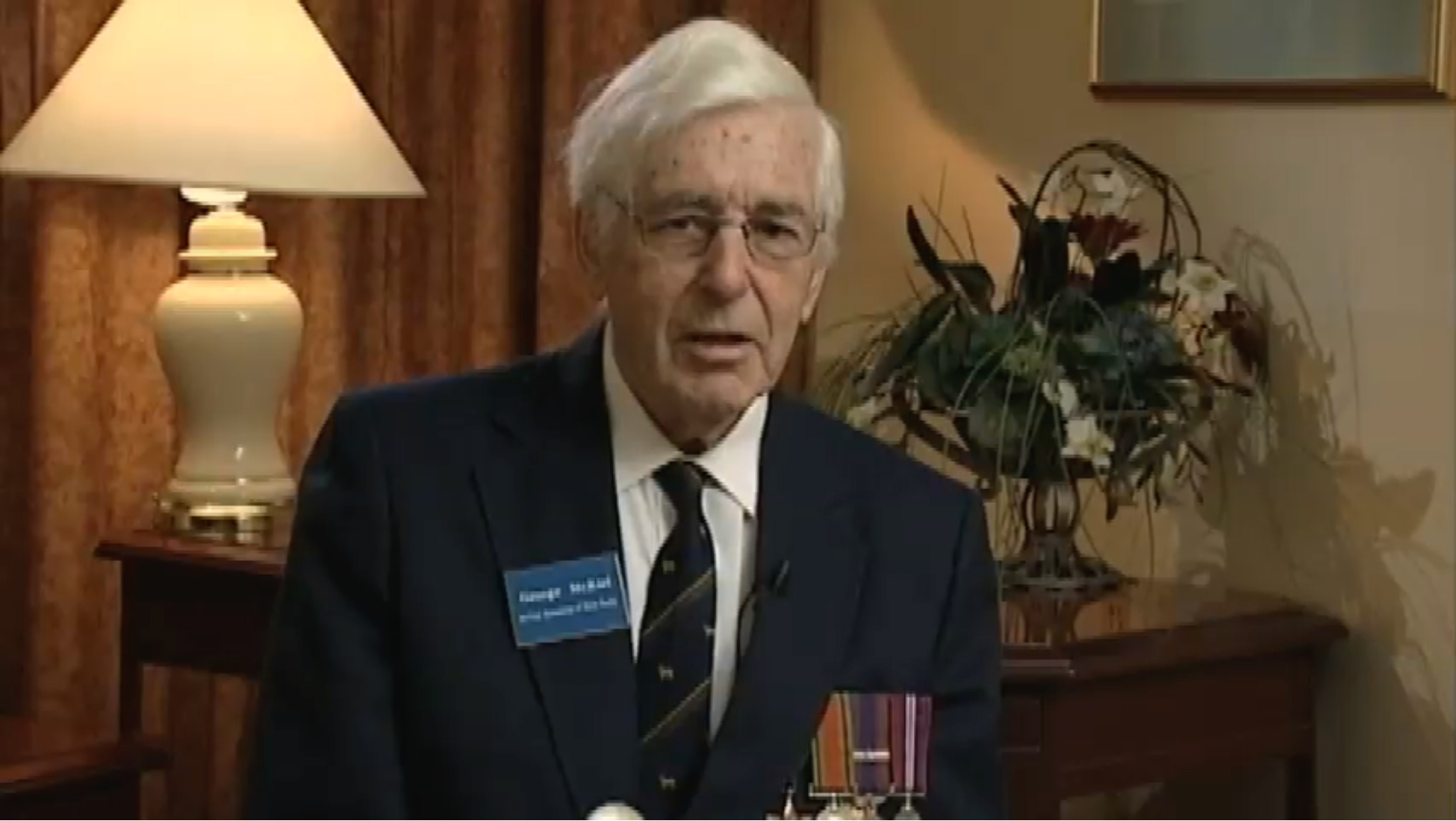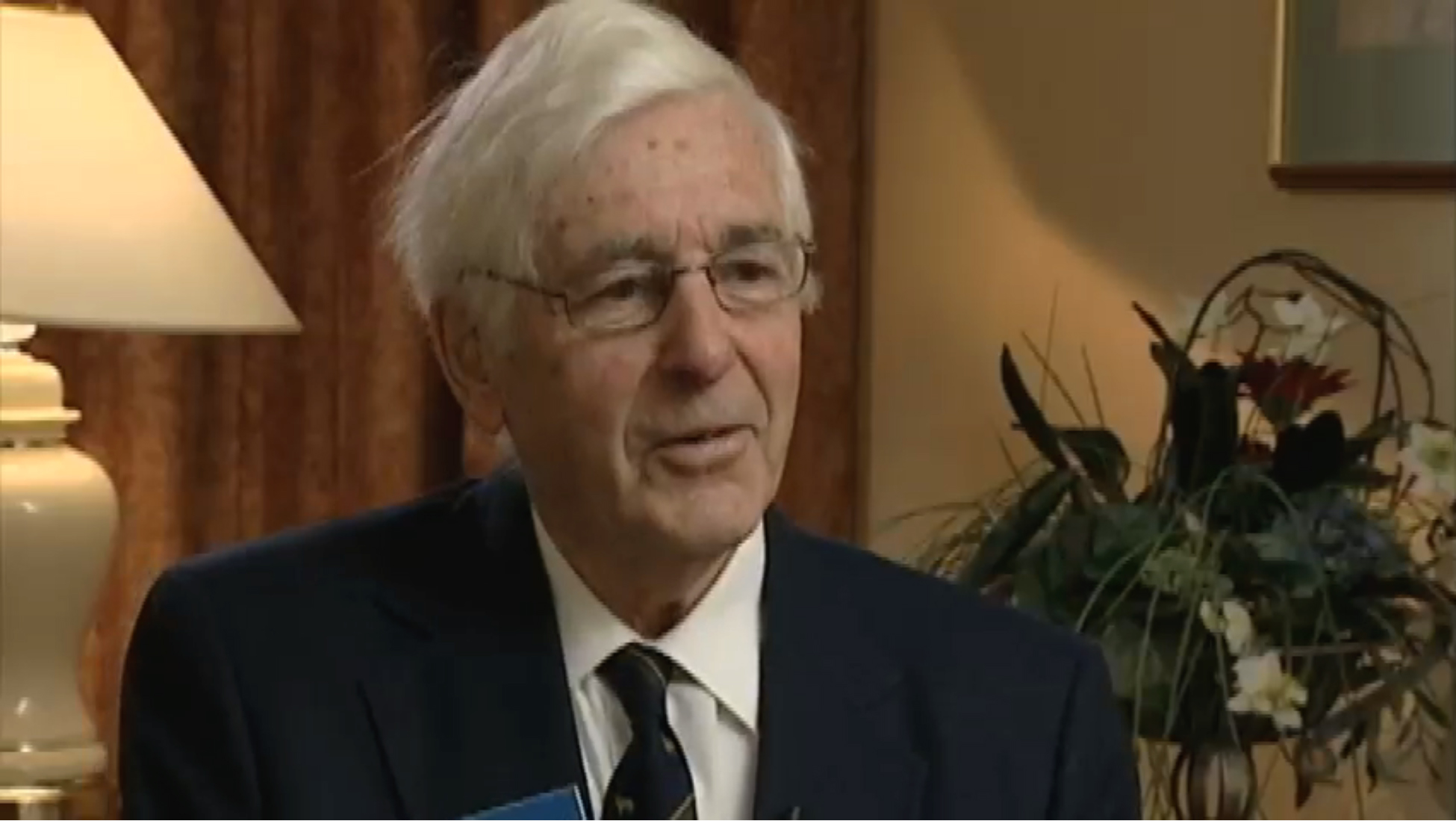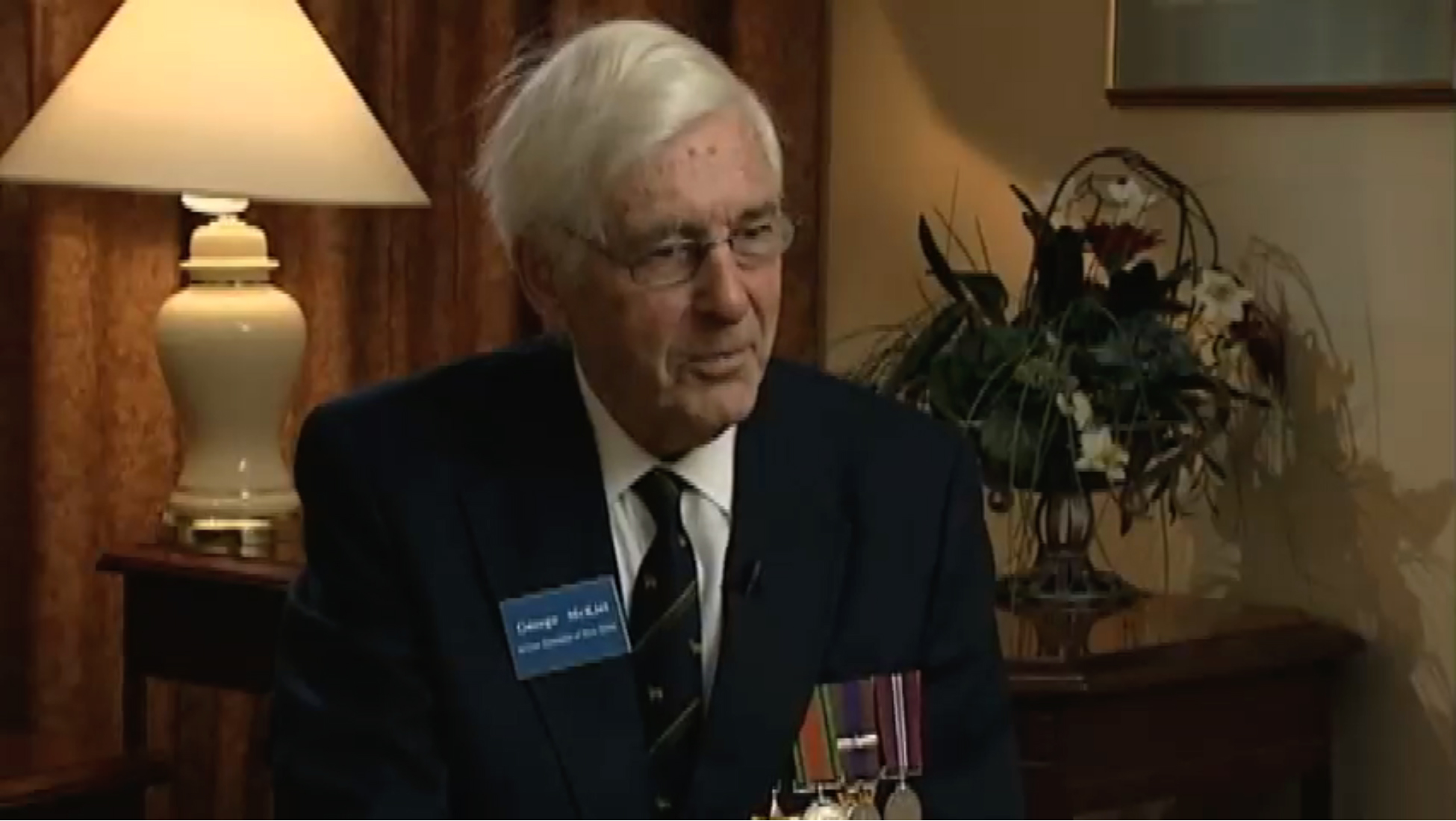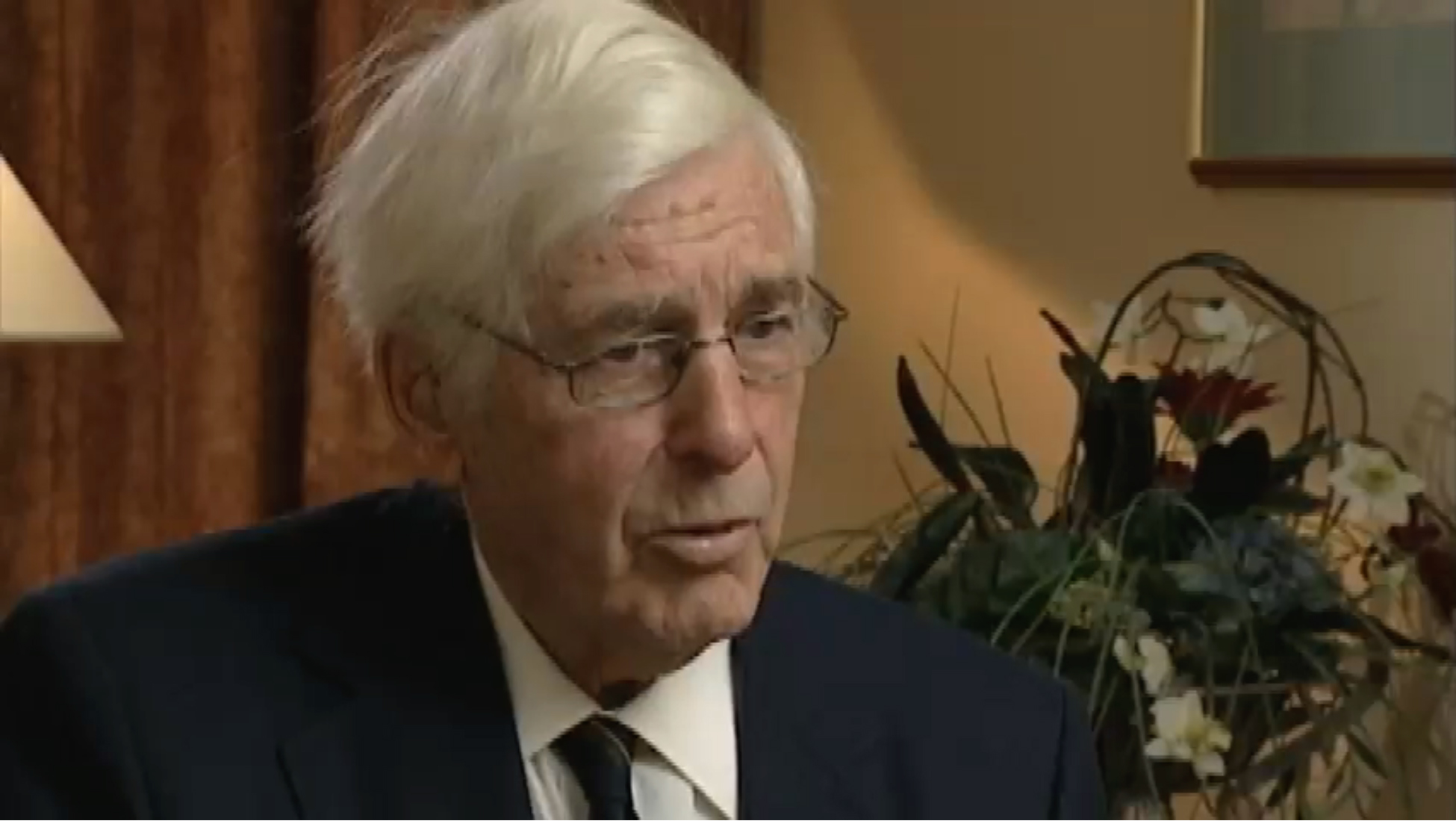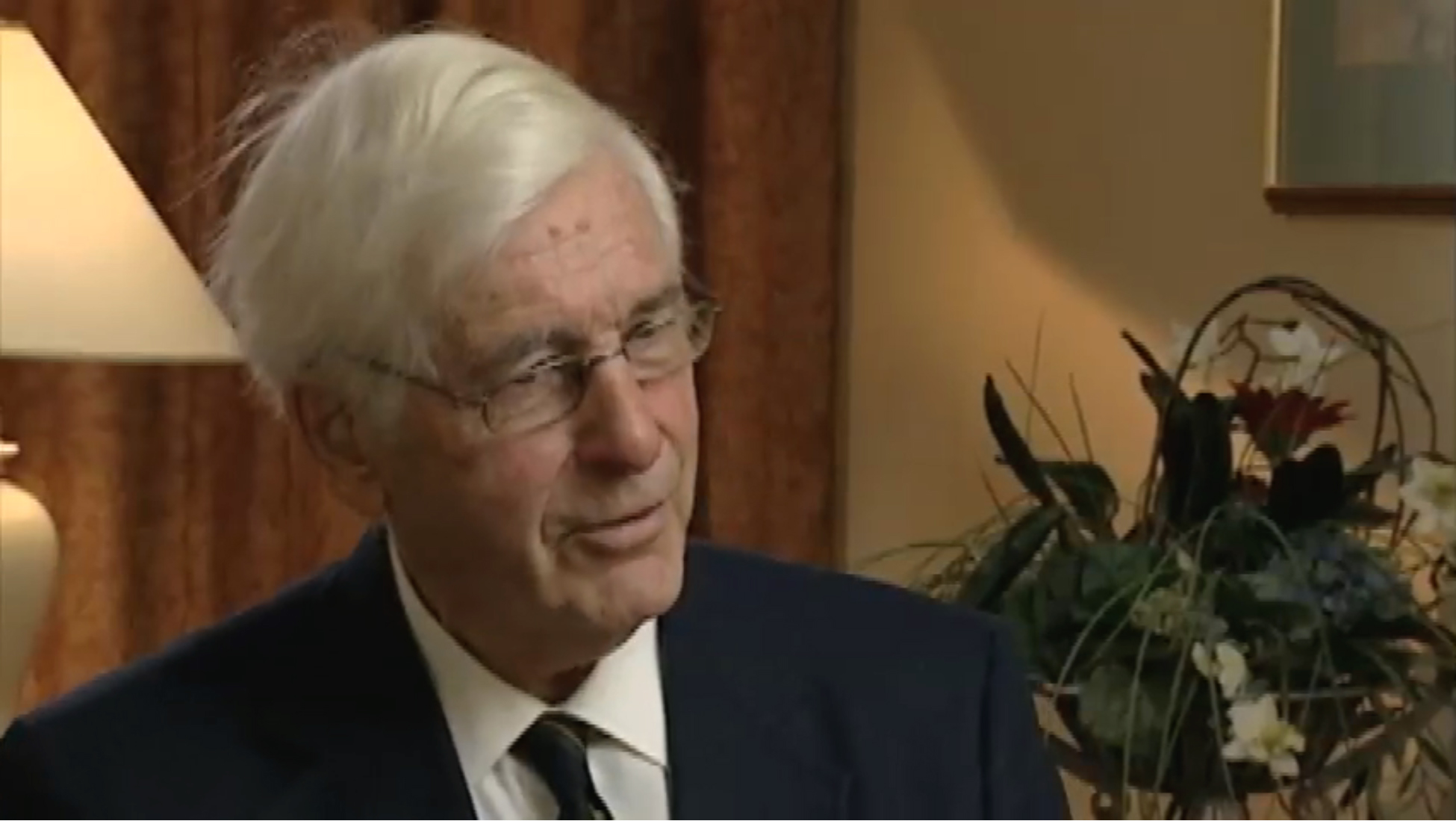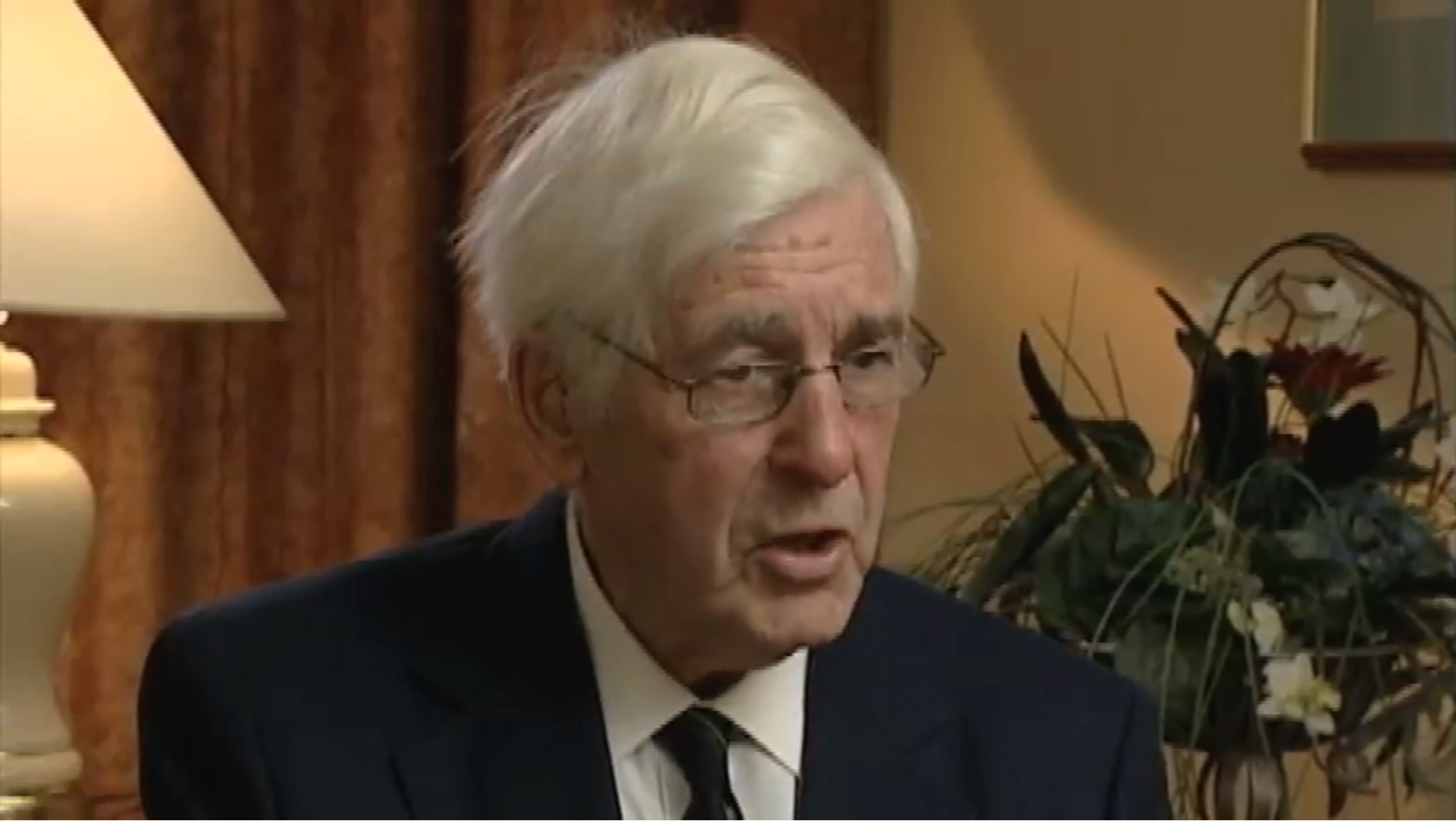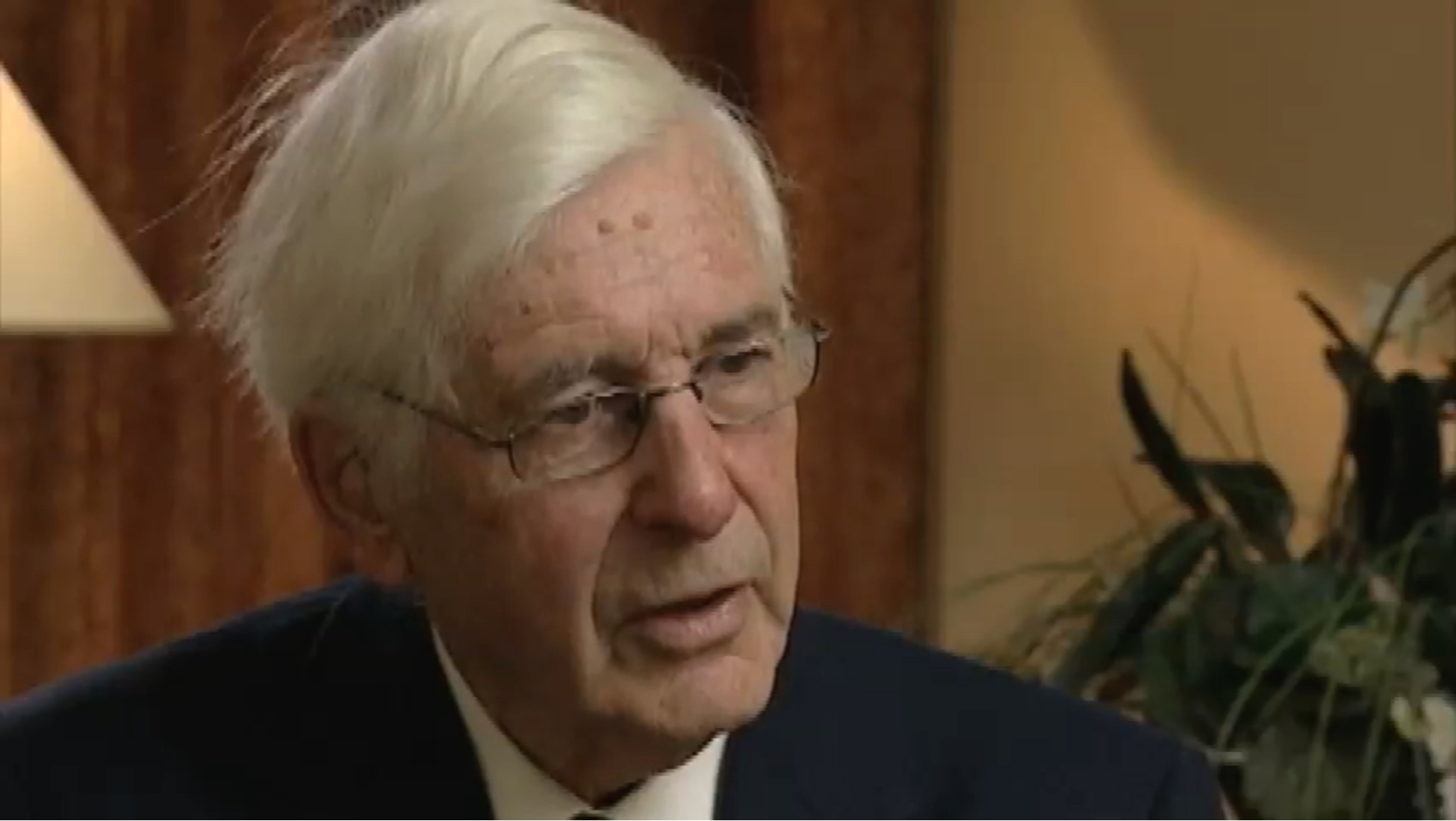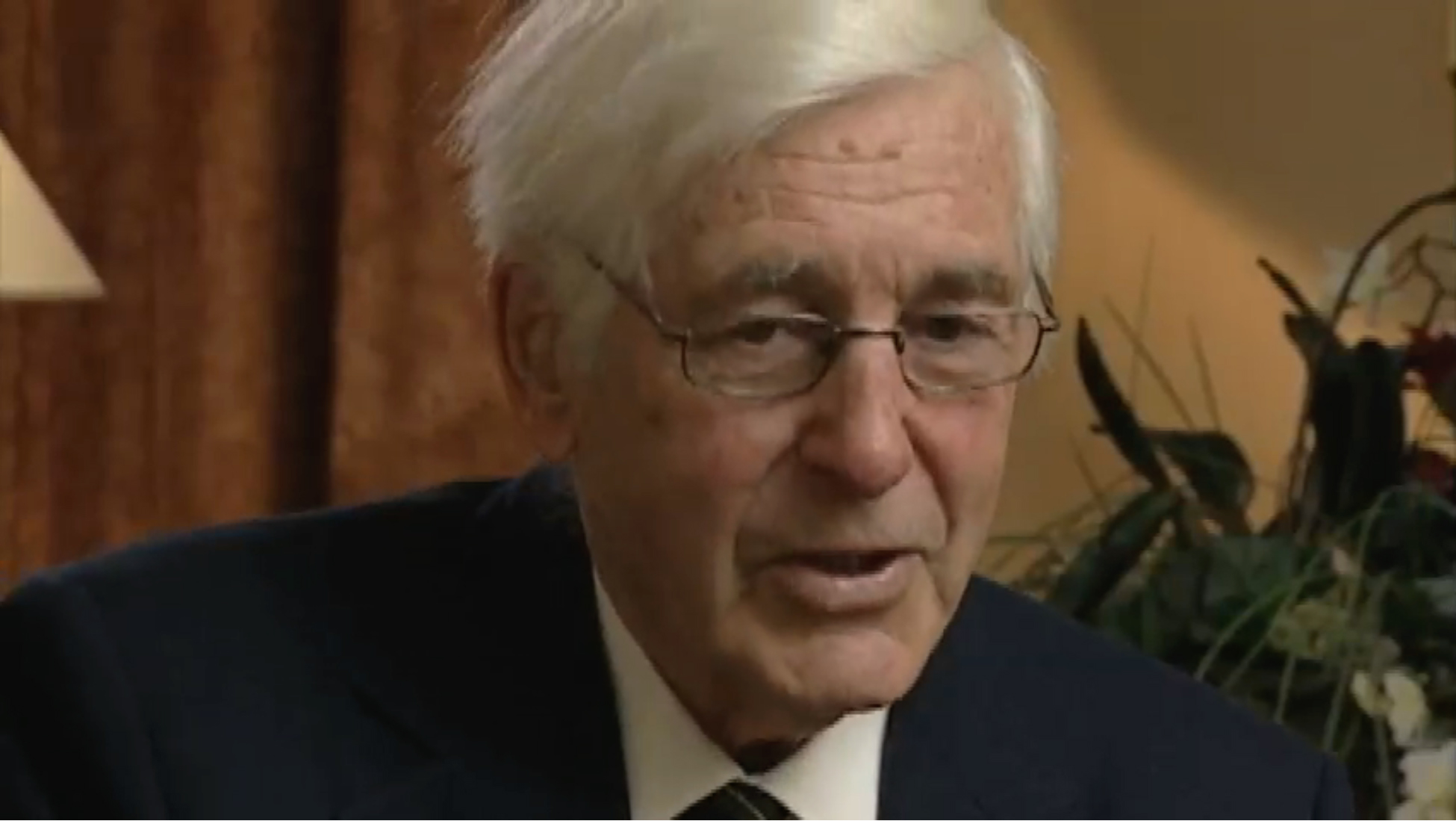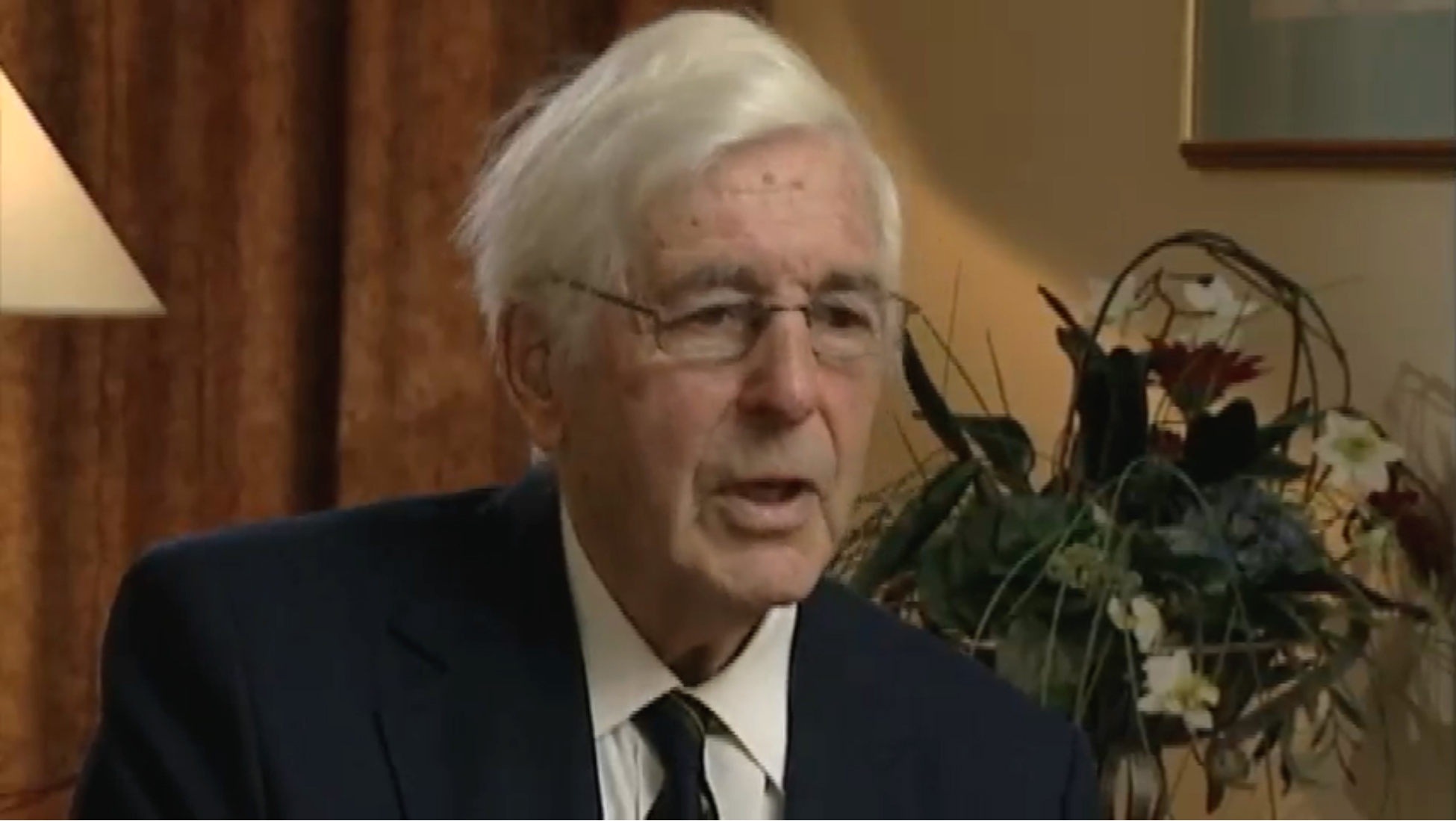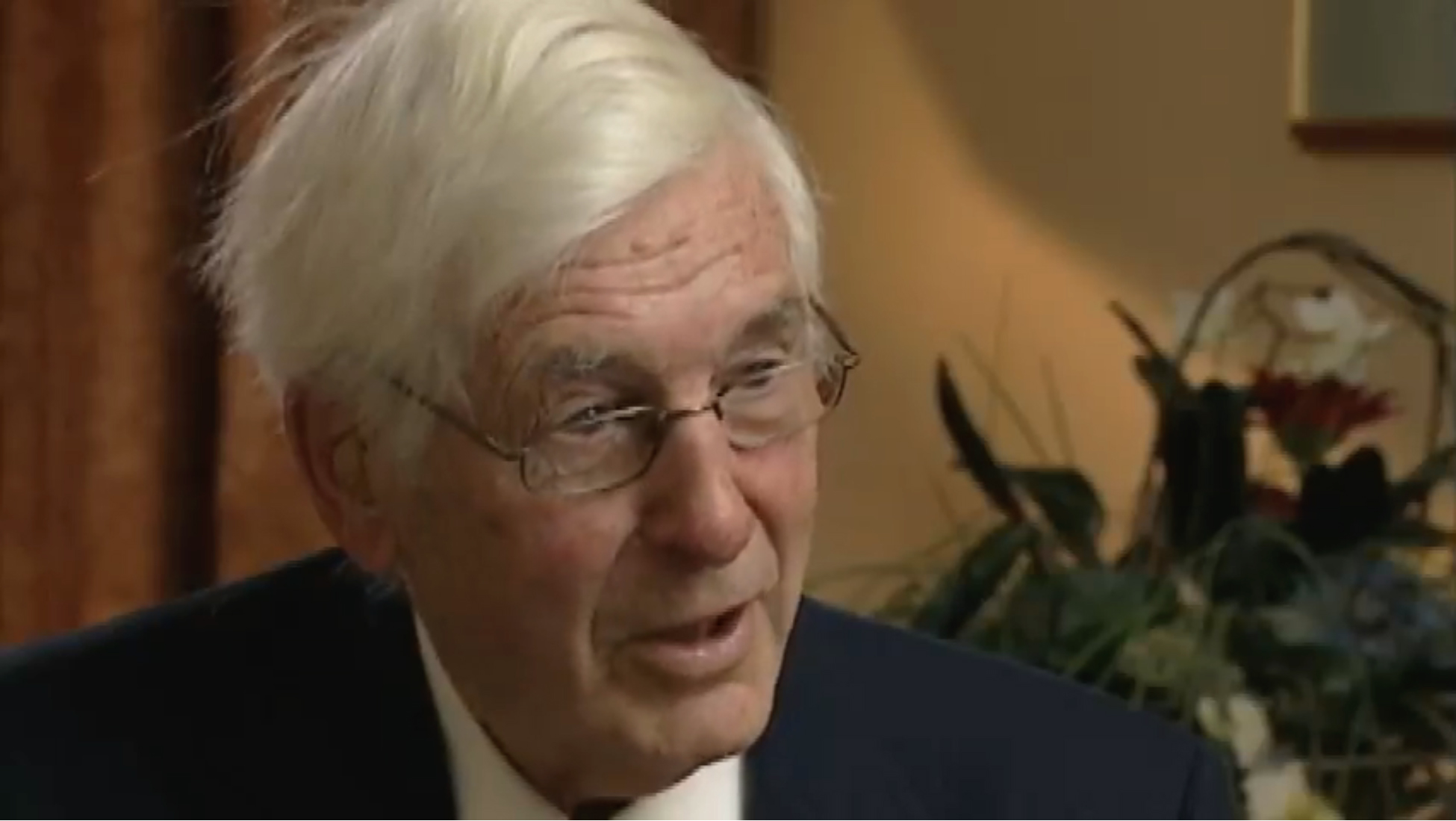When I got to Stalag Luft 3 I was assigned a barrack called
Number 104, and it was a building which was quite long and had
perhaps as many as 120 to 150 men in it. It was broken up into
relatively small rooms, not much bigger than this one, and there
were two-tiered bunks in it. It turned out that it was almost all
New Zealanders, the whole of that hut. The senior officer,
in fact, was a Wing Commander Blake who had been shot down
several years before. He was in Fighter Command. The room
that I was actually assigned to, there were 12 of us in the room,
and they said, "You know, we're having a little trouble with our
senior officer here. He's getting very uppity. We have to play
a little game. Would you, would you like to be part of it, George
as a newcomer, because he won't know you?" And I said,
"Be a part of what kind of a game?" He said, "Well, just to go
and, and see what he tells you and then maybe we'll have some
ammunition so he can mix in a little better with the rest of us."
Well, I went along with it and they came back and handed me
a group captain's jacket, battledress jacket, with DFC and bar
plus a DSO, and so I was outranking the New Zealand officer.
And he called me down, he had a little small room at the end
of the barrack lot, and said, "You know, McKiel, some of these
people have been here since 1939. Some of them are, are very
experienced, and you can learn a great deal from them.
I suggest the first thing you do is to take down your decorations
and your rank and try and mix in and learn through the basics
of the camp." And we chatted a bit more. I went back to our room
and told the New Zealanders what had happened, and they were
rolling on the floor. They were just delighted. "It worked!
It worked! We can humble this guy and get him to be one of us."
Anyway, we sort of overstepped the mark on that because he
invited me back a day or two later and said, "We need another
talk, McKiel." I said, "Good." And when we started chatting,
he said, "You know, there's a lot happening here in camp.
It looks as though there's not a great deal, but there's a lot
of secret work going on and I, I should really tell you a little
bit about this, so that you know that you're part of this now."
However, when I was chatting with the wing commander, he said,
"Now, one of the things you should recognize, McKiel, is that
we do have a tunnelling going on." I said, "Oh?" And he said,
"Yes. In fact, it's only 12 feet from your bunk, where the
entrance is." He said, "I'll just take you to that room and show
you what the trap is like, so that you can have some idea of the
ingenuity that went into designing it." Well, it was a small
stove, wood stove, coal stove, that was in this, on this block
of bricks and tile in the room, and they could lift the stove up
with a couple of two by fours off to one side, leave the chimney
connected so that if the fire was going it would still be okay,
and there was the entrance to the tunnel. And the hut was
supported on these brick pillars, and they had drilled a way down
through the bricks and then had a ladder which went down 30 feet
into the sand. The problem, apparently, was that the Germans had,
when they built the camps, said, "We're going to make this
totally impossible for anybody to escape from," and, so, amongst
other things, they planted monitors in the ground to detect any
sort of chance of tunnelling or digging. They were convinced
that there was some activity going on, because when you get
thirty feet down, the sand, it was all sand you saw, the soil was
totally different. It was a lighter colour, and there was a
particular smell which the German guard dogs could pick up on.
So, although we had the ability to dig with our spoons and
implements at the face of the tunnel, it meant that sand disposal
was a top priority. How to get rid of it without the Germans
realizing that we were doing it. And one of the ways of doing
that was we created people that we called "penguins", and the
penguins were equipped with bags that went down the inside of
the trousers with a drawstring at the end so you could pull on
the cord and then the sand would dump out. And then we could
scuff it into gardens, or sports field, or whatever, where it
wouldn't perhaps be picked up. They also tried putting some up
in the, up in the rafters of the huts, but after a fall-in that
brought the sand all crashing down, they abandoned that.



